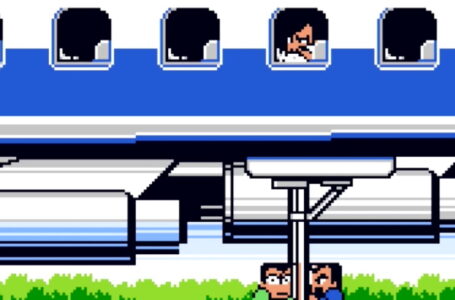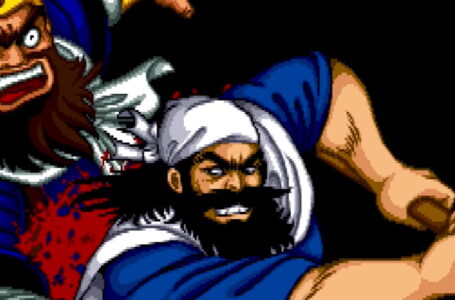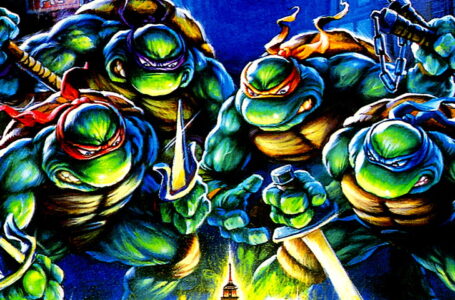The History of Kunio-Kun: Downtown Nekketsu Story
Better known to most by its localised North American title River City Ransom, the third Kunio-kun title Downtown Nekketsu Story (originally released in Japan as Downtown Nekketsu Monogatari) is arguably the benchmark title in the series to which all others are compared. It’s one of the most fondly regarded titles in the Kunio-kun series as a whole, and even to those unfamiliar with the broader franchise, it’s still a widely beloved beat ’em up from the NES era that is still enthusiastically enjoyed to this day.
Like both Nekketsu Renegade Kunio-kun and Nekketsu High School Dodgeball Club, Downtown Nekketsu Story underwent some significant localised changes on its original western release as River City Ransom. All the character names were westernised, and any connections to previous titles were ignored. On top of that, the character sprites were redrawn so that they were wearing street clothes rather than Japanese school uniforms, repositioning the game as more of a gangland brawl than rival high school delinquents battling it out.
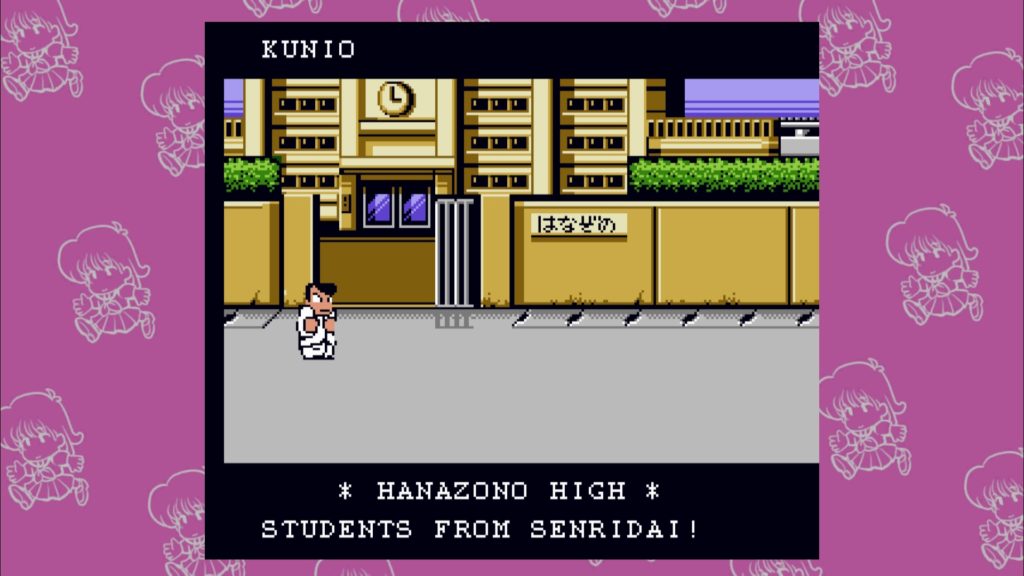
As with Renegade, this decision was likely taken for a few reasons. Firstly, at the time of its 1989 release, Japanese popular culture such as anime and manga hadn’t made much headway in the west, and thus it was assumed that western audiences wouldn’t be familiar with the concept of Japanese high school “banchou” delinquents.
Secondly, since the late ’80s and early ’90s were a time that the media was suffering intense scrutiny from pressure groups seeking to “protect the children” from objectionable content, doubtless it was simply deemed less hassle to theme the game after good old fashioned street gangs rather than brawling schoolkids.
To be honest, the retheming does work, since the Kunio-kun series up until this point — particularly both Nekketsu Renegade Kunio-kun and Downtown Nekketsu Story itself — already had a distinctly 1950s-inspired audio-visual aesthetic, with plenty of pointy quiffs on display accompanied by rock and roll-style music. As such, it was relatively little effort to reskin the game as a light-hearted Grease or West Side Story-style gangland punchup.
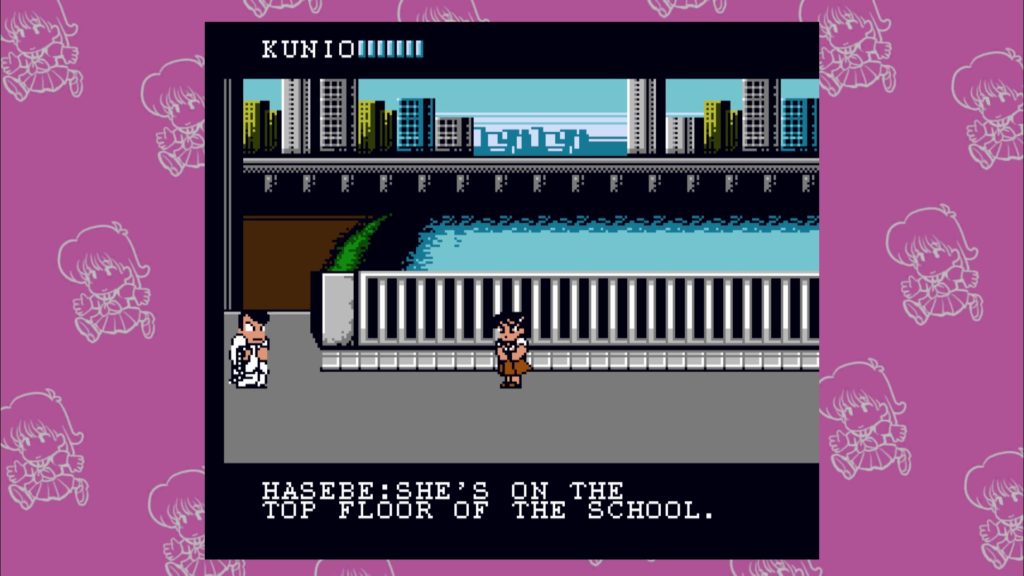
Regardless, the recent Double Dragon and Kunio-kun Retro Brawler Bundle provides the first official opportunity for English speakers to enjoy the original context of this title. The story goes that six months after the events of Nekketsu Renegade Kunio-kun, the “Double Dragon Brothers” Ryuichi and Ryuji — no relation to Billy and Jimmy Lee — have been terrorising the high school students in the area, and their latest offence is kidnapping the girlfriend of Kunio-kun’s biggest rival Riki, last seen in both Nekketsu High School Dodgeball Club as a player and in Nekketsu Renegade Kunio-kun as the first boss.
Supposedly Downtown Nekketsu Story was an attempt by Technos Japan designers Mitsuhiro Yoshida and Hiroyuki Sekimoto to create a game similar to their popular Double Dragon series, but which parents and their children could play together. To that end, the original Japanese release of Downtown Nekketsu Story (and the new localisation in the Double Dragon and Kunio-kun Retro Brawler Bundle) features a two-player mode in which it’s not possible for the two participants to damage one another, making it a purely cooperative experience. This was removed in the westernised version of River City Ransom.
It’s clear that accessibility and player-friendliness was on the mind of Yoshida and Sekimoto when designing Downtown Nekketsu Story, however. The fact that the game is rather open-ended means that it can be enjoyed for as little or as long as you like, with its save and password functions providing the opportunity to pick up where you left off at a later date. The overall objective — rescue Riki’s girlfriend — is the only real thing that you’re told you “must” do in the game; what you do in between is largely up to you. So long as your decision involves either punching people in the head or eating food, of course.
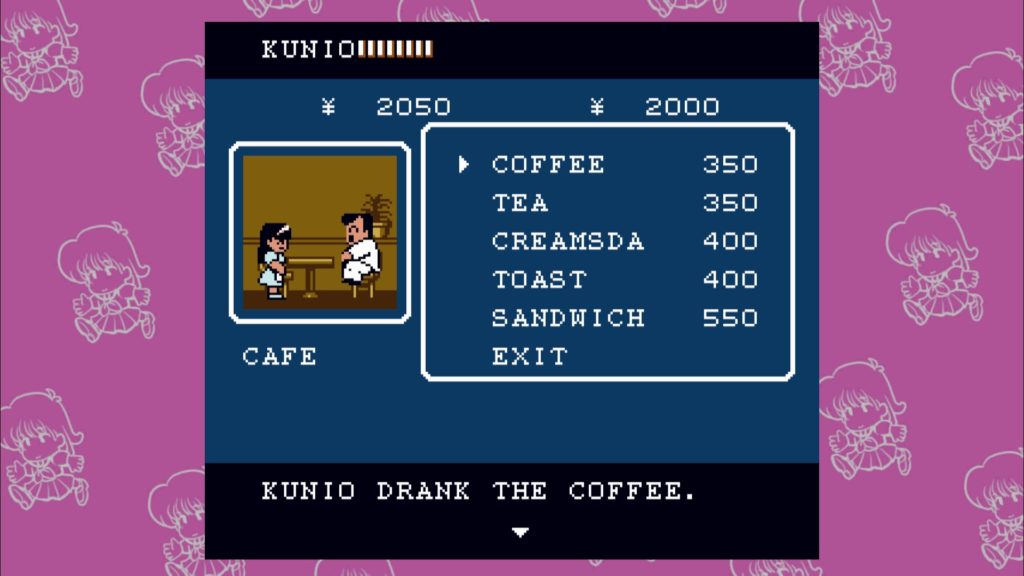
Downtown Nekketsu Story’s RPG-style elements are its most distinguishing feature when compared to other beat ’em ups of the period, and they elevate it from being something more than a simple, linear, arcade-style belt scroller. In many respects, it feels like a bit of a disservice to Downtown Nekketsu Story to call it a “beat ’em up”; it’s much more of a combat-centric sandbox game.
In fact, one can trace a pretty direct line forwards from Downtown Nekketsu Story to modern titles like Sega’s Yakuza series; those games are likewise often miscategorised as “beat ’em ups” when in fact character progression plays a much more significant role than in your average brawler. Hell, in some Yakuza games — Yakuza Zero being probably the most prominent example — you literally invest money into your character progression, similar to how in Downtown Nekketsu Story you spend money on food items to gradually power up your stats as you see fit.
In terms of core mechanics, Downtown Nekketsu Story is solid. Some NES beat ’em ups lack a bit of the sense of impact that their arcade counterparts have, primarily due to their tendency towards dumpy cute sprites rather than more realistic characters. Downtown Nekketsu Story strikes a good balance, though; while its cutesy visual style, carried over from Nekketsu High School Dodgeball Club, is immediately appealing and cartoony, some solid character animation and excellent implementation of hitstun means that every punch, kick and weapon strike is something you can really feel.
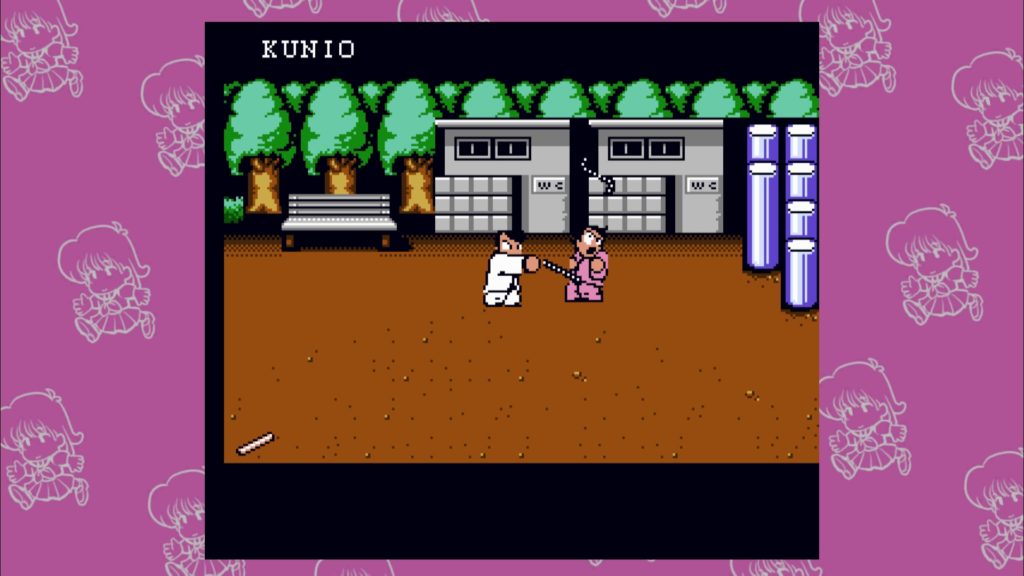
The game might initially appear to not have all that much variation to it, since every enemy you encounter is a male high school student — the only girls in the game are non-combatants, and appear in the game’s “shopping” areas. As you play, though, you’ll notice that the different colours of uniform — indicating a different high school allegiance — have their own priorities and attack patterns. Not only that, but different characters have their own names, faces and distinctive stats, meaning that every opponent you’ll face is an individual.
In practice, this might not be all that noticeable, particularly on the lower difficulty levels, but the further you get from the game’s start point, the tougher the enemies you have to face become — and the greater rewards you can acquire from them. There are also several tough bosses along the way who generally bar your progression onwards into subsequent areas — these provide a good means of judging whether or not your current stats mean you’re ready to move on, or if you should spend a bit more time shovelling sandwiches into your mouth to buff up your resilience.
Probably the greatest factor that contributes to the game’s accessibility, player-friendliness and suitability for family play is the fact that you can’t really “fail”. Unlike arcade-style beat ’em ups, where there’s a hard Game Over if you run out of lives — particularly in console ports with limited or non-existent continues — in Downtown Nekketsu Story, getting knocked out as a result of a careless encounter or a boss that is too tough for you simply results in you being sent back to a checkpoint — usually the last shopping area you visited. You lose half your money on hand, but other than that there’s no real punishment.
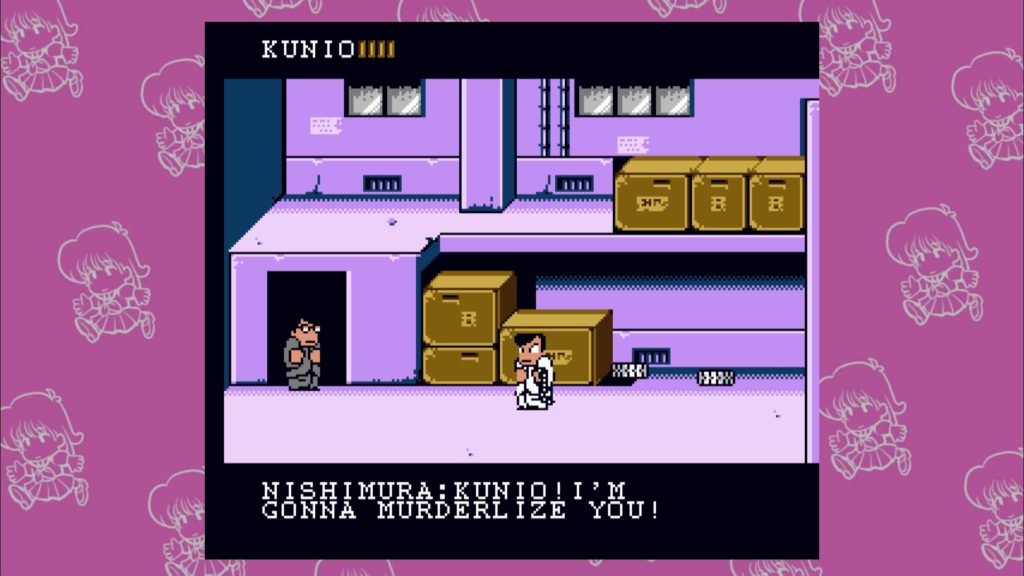
With this in mind, you really can wander around Downtown Nekketsu Story’s world as much as you want, getting into scrapes and gradually powering yourself up until you’re an unstoppable force of high school justice. Of course, this also opens the game up to self-imposed challenges such as trying to beat it without eating any sandwiches, seeing how far you can get across the game world in a single un-upgraded “run” or perhaps simply competing with your co-op buddy to see who is best at lamping Japanese high school kids in the face.
While this open-plan nature can leave the game feeling a bit directionless at times compared to more modern takes on the formula such as the aforementioned Yakuza — or even the series’ own modern successor River City Girls — it’s easy to see the massive influence that Downtown Nekketsu Story has had on everything that came after it. Perhaps most impressively, its lasting legacy is that it showed how the beat ’em up — a genre often associated with shallow gameplay and unreasonable difficulty — can have plenty of depth and long-term interest when specifically designed for play at home rather than the arcade.
The Double Dragon and Kunio-kun Retro Brawler Bundle is available for Nintendo Switch and PlayStation 4.
Join The Discussion
Rice Digital Discord
Rice Digital Twitter
Rice Digital Facebook
Or write us a letter for the Rice Digital Friday Letters Page by clicking here!
Disclosure: Some links in this article may be affiliate links, which means we may earn a small commission if you make a purchase after clicking on them. This is at no additional cost to you and helps support Rice Digital!
- Letter from the Editor: passing the torch - June 30, 2023
- Super Woden GP 2 is looking promising - June 30, 2023
- Inti Creates is making a 32 bit-style Love Live action platformer - June 26, 2023





